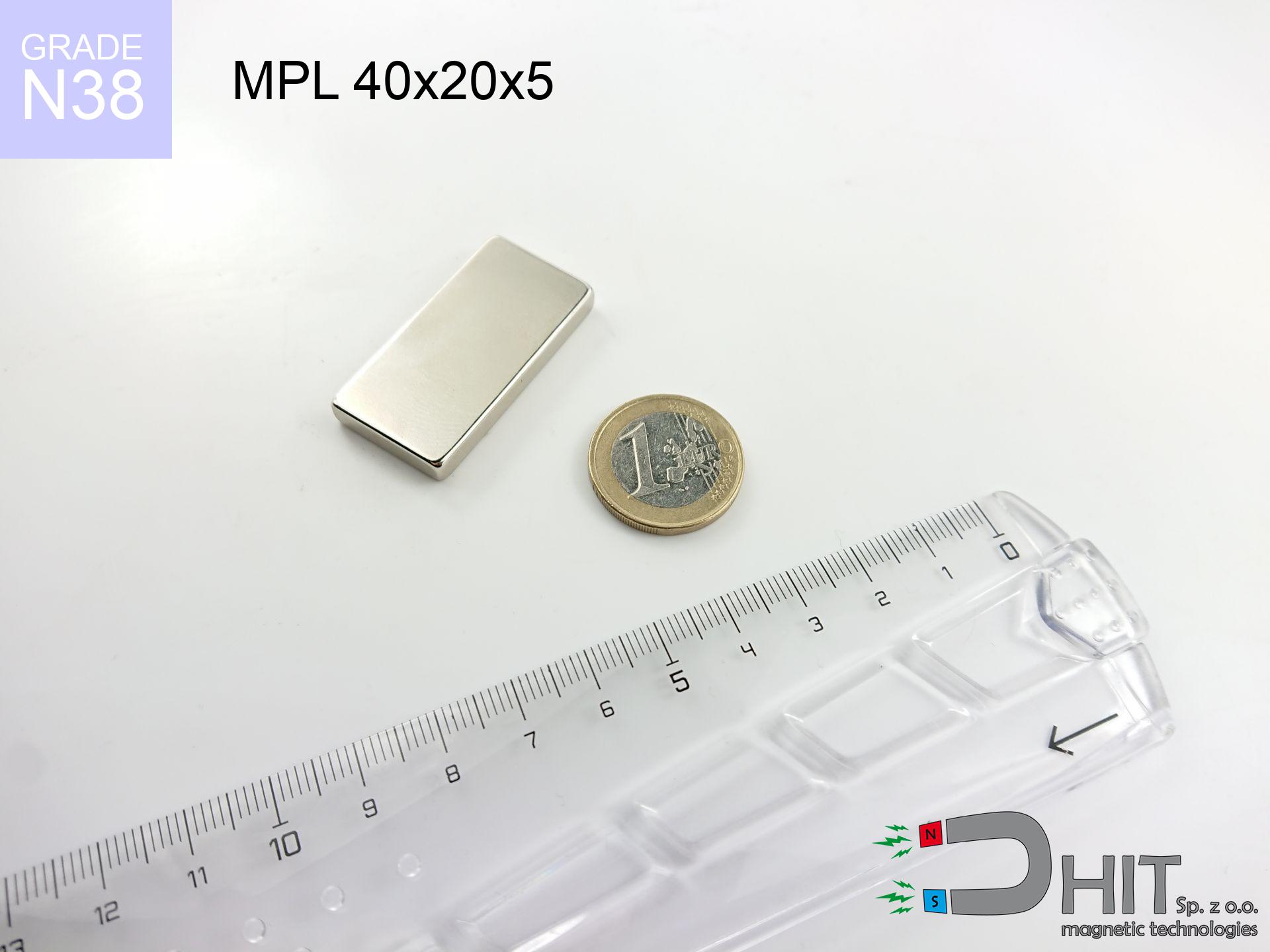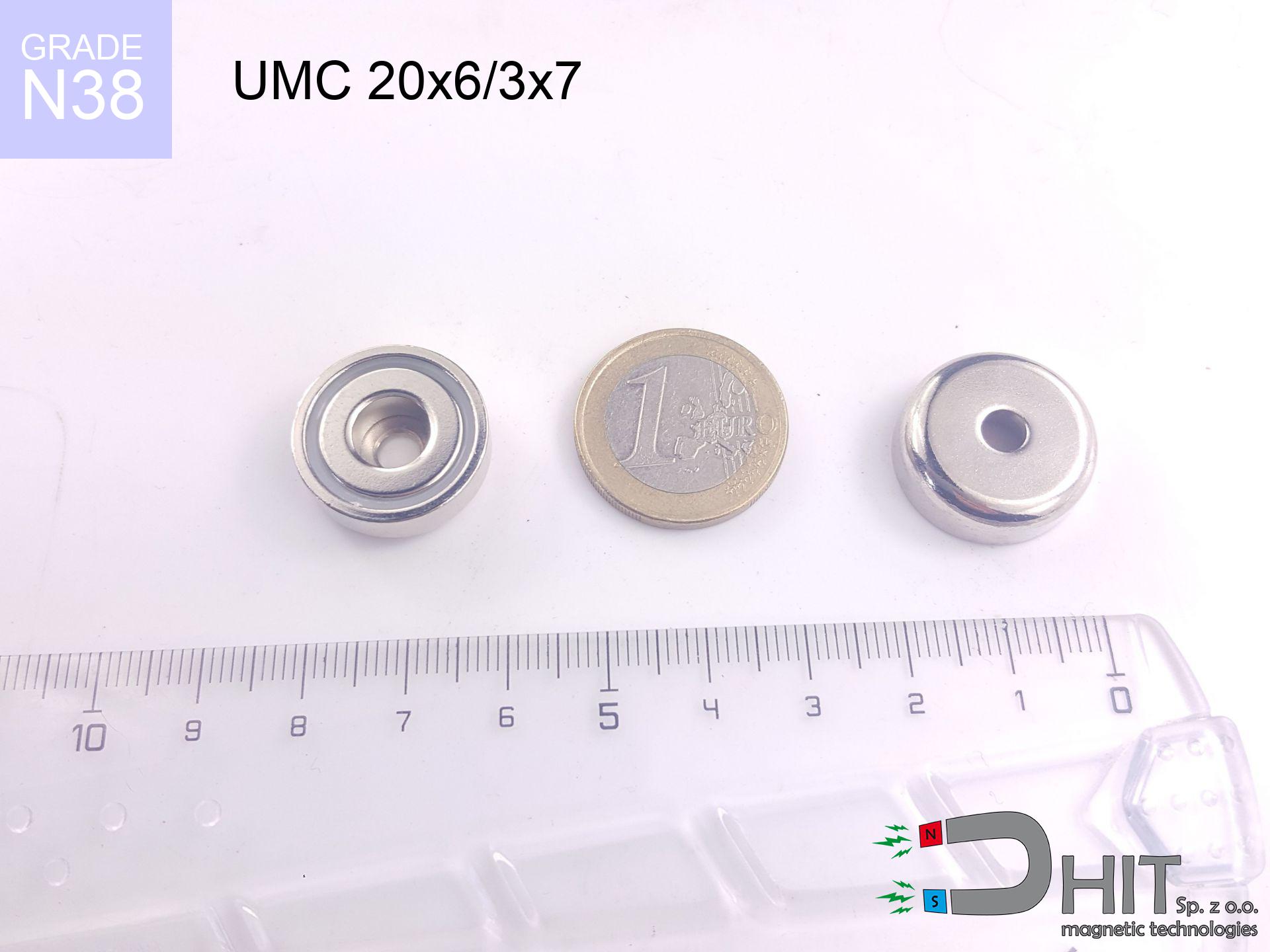SM 18x100 [2xM5] / N42 - magnetic separator
magnetic separator
Catalog no 130269
GTIN/EAN: 5906301812715
Diameter Ø
18 mm [±1 mm]
Height
100 mm [±1 mm]
Weight
0.01 g
Magnetic Flux
~ 5 400 Gauss [±5%]
221.40 ZŁ with VAT / pcs + price for transport
180.00 ZŁ net + 23% VAT / pcs
bulk discounts:
Need more?
Contact us by phone
+48 22 499 98 98
if you prefer send us a note by means of
request form
the contact form page.
Force along with structure of magnetic components can be checked with our
force calculator.
Same-day shipping for orders placed before 14:00.
Product card - SM 18x100 [2xM5] / N42 - magnetic separator
Specification / characteristics - SM 18x100 [2xM5] / N42 - magnetic separator
| properties | values |
|---|---|
| Cat. no. | 130269 |
| GTIN/EAN | 5906301812715 |
| Production/Distribution | Dhit sp. z o.o. |
| Country of origin | Poland / China / Germany |
| Customs code | 85059029 |
| Diameter Ø | 18 mm [±1 mm] |
| Height | 100 mm [±1 mm] |
| Weight | 0.01 g |
| Material Type | Stainless steel AISI 304 / A2 |
| Magnetic Flux | ~ 5 400 Gauss [±5%] |
| Size/Mount Quantity | 2xM5 |
| Polarity | circumferential - 5 poles |
| Casing Tube Thickness | 1 mm |
| Manufacturing Tolerance | ±1 mm |
Magnetic properties of material N42
| properties | values | units |
|---|---|---|
| remenance Br [min. - max.] ? | 12.9-13.2 | kGs |
| remenance Br [min. - max.] ? | 1290-1320 | mT |
| coercivity bHc ? | 10.8-12.0 | kOe |
| coercivity bHc ? | 860-955 | kA/m |
| actual internal force iHc | ≥ 12 | kOe |
| actual internal force iHc | ≥ 955 | kA/m |
| energy density [min. - max.] ? | 40-42 | BH max MGOe |
| energy density [min. - max.] ? | 318-334 | BH max KJ/m |
| max. temperature ? | ≤ 80 | °C |
Physical properties of sintered neodymium magnets Nd2Fe14B at 20°C
| properties | values | units |
|---|---|---|
| Vickers hardness | ≥550 | Hv |
| Density | ≥7.4 | g/cm3 |
| Curie Temperature TC | 312 - 380 | °C |
| Curie Temperature TF | 593 - 716 | °F |
| Specific resistance | 150 | μΩ⋅cm |
| Bending strength | 250 | MPa |
| Compressive strength | 1000~1100 | MPa |
| Thermal expansion parallel (∥) to orientation (M) | (3-4) x 10-6 | °C-1 |
| Thermal expansion perpendicular (⊥) to orientation (M) | -(1-3) x 10-6 | °C-1 |
| Young's modulus | 1.7 x 104 | kg/mm² |
Table 1: Rod construction
SM 18x100 [2xM5] / N42
| Parameter | Value | Description / Unit |
|---|---|---|
| Diameter (Ø) | 18 | mm |
| Total length | 100 | mm (L) |
| Active length | 64 | mm |
| Section count | 2 | modules |
| Dead zone | 36 | mm (2x 18mm starter) |
| Weight (est.) | ~193 | g |
| Active area | 36 | cm² (Area) |
| Housing material | AISI 304 | 1.4301 (Inox) |
| Surface finish | Ra < 0.8 µm | Polished |
| Temp. class | 80°C | Standard (N) |
| Force loss (at max °C) | -12.8% | Reversible loss (physics) |
| Force (calculated) | 3.8 | kg (theor.) |
| Induction (surface) | ~5 400 | Gauss (Max) |
Chart 2: Field profile (2 sections)
Chart 3: Temperature performance
Elemental analysis
| iron (Fe) | 64% – 68% |
| neodymium (Nd) | 29% – 32% |
| boron (B) | 1.1% – 1.2% |
| dysprosium (Dy) | 0.5% – 2.0% |
| coating (Ni-Cu-Ni) | < 0.05% |
Sustainability
| recyclability (EoL) | 100% |
| recycled raw materials | ~10% (pre-cons) |
| carbon footprint | low / zredukowany |
| waste code (EWC) | 16 02 16 |
View also offers
Strengths as well as weaknesses of rare earth magnets.
Advantages
- They retain attractive force for nearly 10 years – the drop is just ~1% (in theory),
- Magnets effectively protect themselves against demagnetization caused by foreign field sources,
- In other words, due to the reflective layer of nickel, the element becomes visually attractive,
- Neodymium magnets achieve maximum magnetic induction on a contact point, which increases force concentration,
- Made from properly selected components, these magnets show impressive resistance to high heat, enabling them to function (depending on their shape) at temperatures up to 230°C and above...
- Possibility of detailed forming as well as adjusting to atypical needs,
- Universal use in modern industrial fields – they find application in mass storage devices, motor assemblies, precision medical tools, as well as modern systems.
- Thanks to their power density, small magnets offer high operating force, in miniature format,
Disadvantages
- They are prone to damage upon heavy impacts. To avoid cracks, it is worth securing magnets using a steel holder. Such protection not only shields the magnet but also improves its resistance to damage
- Neodymium magnets lose their strength under the influence of heating. As soon as 80°C is exceeded, many of them start losing their force. Therefore, we recommend our special magnets marked [AH], which maintain durability even at temperatures up to 230°C
- Due to the susceptibility of magnets to corrosion in a humid environment, we recommend using waterproof magnets made of rubber, plastic or other material stable to moisture, in case of application outdoors
- Limited possibility of making nuts in the magnet and complicated forms - preferred is a housing - mounting mechanism.
- Health risk to health – tiny shards of magnets can be dangerous, in case of ingestion, which gains importance in the context of child safety. Furthermore, small components of these magnets can disrupt the diagnostic process medical when they are in the body.
- With budget limitations the cost of neodymium magnets is economically unviable,
Holding force characteristics
Magnetic strength at its maximum – what contributes to it?
- with the contact of a yoke made of low-carbon steel, guaranteeing full magnetic saturation
- whose thickness reaches at least 10 mm
- characterized by lack of roughness
- without the slightest air gap between the magnet and steel
- under axial force direction (90-degree angle)
- at standard ambient temperature
Practical lifting capacity: influencing factors
- Air gap (betwixt the magnet and the plate), as even a tiny clearance (e.g. 0.5 mm) can cause a decrease in lifting capacity by up to 50% (this also applies to varnish, corrosion or dirt).
- Load vector – maximum parameter is reached only during perpendicular pulling. The resistance to sliding of the magnet along the plate is typically several times lower (approx. 1/5 of the lifting capacity).
- Substrate thickness – for full efficiency, the steel must be adequately massive. Paper-thin metal restricts the attraction force (the magnet "punches through" it).
- Steel grade – the best choice is pure iron steel. Stainless steels may attract less.
- Surface finish – full contact is possible only on smooth steel. Any scratches and bumps create air cushions, weakening the magnet.
- Operating temperature – neodymium magnets have a negative temperature coefficient. At higher temperatures they lose power, and at low temperatures gain strength (up to a certain limit).
Lifting capacity testing was carried out on a smooth plate of optimal thickness, under a perpendicular pulling force, in contrast under attempts to slide the magnet the holding force is lower. Moreover, even a minimal clearance between the magnet’s surface and the plate reduces the lifting capacity.
Warnings
Nickel allergy
Allergy Notice: The nickel-copper-nickel coating consists of nickel. If an allergic reaction occurs, immediately stop handling magnets and wear gloves.
Do not overheat magnets
Keep cool. Neodymium magnets are sensitive to temperature. If you require resistance above 80°C, look for HT versions (H, SH, UH).
Magnet fragility
Watch out for shards. Magnets can fracture upon violent connection, ejecting sharp fragments into the air. We recommend safety glasses.
Serious injuries
Risk of injury: The pulling power is so great that it can cause hematomas, crushing, and even bone fractures. Use thick gloves.
Impact on smartphones
Note: neodymium magnets produce a field that interferes with sensitive sensors. Maintain a safe distance from your phone, device, and GPS.
This is not a toy
NdFeB magnets are not toys. Swallowing multiple magnets may result in them attracting across intestines, which poses a direct threat to life and requires urgent medical intervention.
Cards and drives
Avoid bringing magnets near a purse, computer, or TV. The magnetic field can destroy these devices and wipe information from cards.
Medical implants
Warning for patients: Strong magnetic fields affect electronics. Maintain minimum 30 cm distance or ask another person to work with the magnets.
Do not drill into magnets
Drilling and cutting of neodymium magnets carries a risk of fire risk. Magnetic powder reacts violently with oxygen and is hard to extinguish.
Immense force
Before starting, read the rules. Sudden snapping can destroy the magnet or hurt your hand. Be predictive.

![Separation magnetic rod SM 18x100 [2xM5] / N42 Separation magnetic rod SM 18x100 [2xM5] / N42](https://cdn3.dhit.pl/graphics/banners/magnet.webp)
![SM 18x100 [2xM5] / N42 - magnetic separator](https://cdn3.dhit.pl/graphics/products/sm-18x100-2xm5-pem.jpg)





